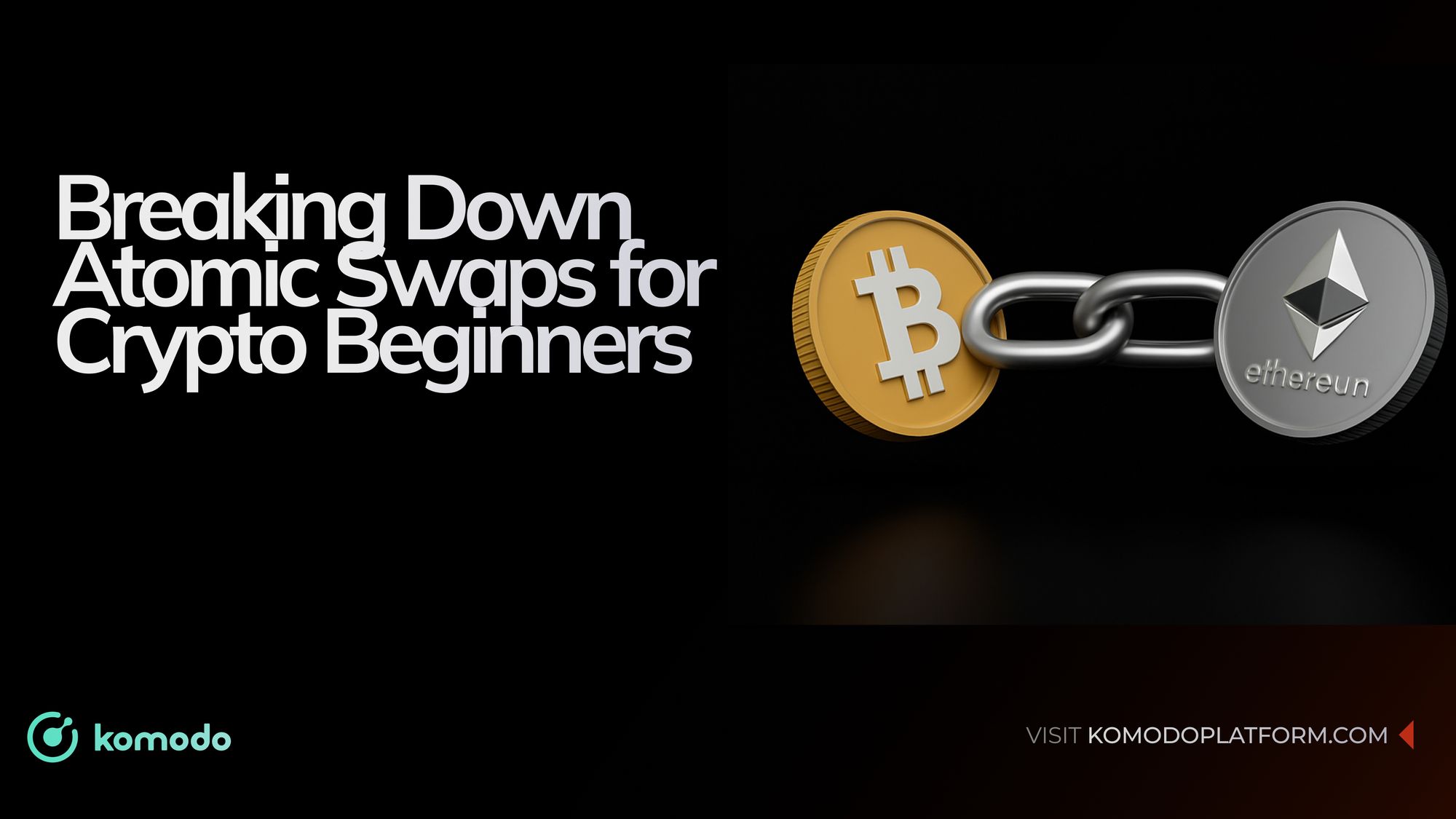Atomic swaps have become an innovation in the cryptocurrency space. Understanding what atomic swaps are and why they matter is essential for both beginners and seasoned users.
In this article, we provide a complete explanation of atomic swaps, their mechanics, and the advantages they bring to crypto traders and users.
What Are Atomic Swaps?
Atomic swaps (also called cross-chain atomic swaps) are automated, self-executing contracts that allow two users to exchange cryptocurrencies from separate blockchain networks safely and trustlessly.
These swaps use time-locked smart contracts (often Hashed Timelock Contracts, HTLCs) that guarantee either both parties complete the transaction or the swap is canceled and funds are returned. This "all-or-nothing" mechanism guarantees fairness and enhances atomic swaps security.
How Do Atomic Swaps Work?
The process involves creating a smart contract that locks the tokens from both parties. Here's a simplified breakdown of the process:
| Step | Description |
|---|---|
| Initiating the Swap | A user generates a unique cryptographic key, locking the funds for the transaction |
| Creating the Contract | An HTLC is created, outlining the terms of the swap with a specific time limit |
| Executing the Swap | Both parties meet the HTLC conditions. If they do, the swap occurs; if not, it’s canceled |
| Completion | Once both parties fulfill the terms, the cryptocurrencies are exchanged |
This process of cross-chain atomic swaps allows users to securely exchange cryptocurrencies across different blockchains without relying on intermediaries.
The Benefits of Atomic Swaps
There are several benefits of atomic swaps that make this technology appealing to both seasoned crypto traders and beginners. Let's dive into these advantages with some key statistics to highlight their impact.
| Benefit | Description | Statistical Impact |
|---|---|---|
| No Need for Centralized Exchanges | Atomic swaps eliminate the need for third-party exchanges | 90% of crypto traders report higher security in direct trades over exchanges |
| Increased Privacy & Security | Users retain control of their private keys during the swap | 70% of crypto users prefer decentralized methods due to privacy concerns |
| Lower Transaction Fees | Atomic swaps incur no intermediary fees, reducing costs | Transaction fees can be reduced by up to 50% compared to exchange-based swaps |
| Faster Transactions | Eliminates delays associated with centralized exchange processing | 65% of traders report faster processing times with atomic swaps compared to exchanges |
| Cross-Chain Compatibility | Allows users to swap assets across different blockchains | 75% of surveyed users wish for more cross-chain swap options |
Why Should Beginners Care About Atomic Swaps?
For crypto beginners, atomic swaps offer an easy and secure way to start trading and exchanging cryptocurrencies. By understanding what atomic swaps are, newcomers can make smarter decisions when engaging with digital assets and platforms. Here’s why beginners should pay attention:
- Increased Control - Atomic swapping puts users in control of their funds, unlike centralized exchanges where your assets are in the hands of the platform.
- Lower Risk - With no intermediaries, there’s no single point of failure, reducing the chances of losing funds due to hacks or errors by third-party platforms.
- Instant Transactions - Beginners can swap cryptocurrencies quickly, without waiting for confirmation from a centralized authority, making trading smoother and more efficient.
Why Choose Komodo Platform for Atomic Swaps?
Atomic swaps are changing the way people trade cryptocurrencies by making it secure, decentralized, and affordable. Learning how they work gives beginners better control over their trades, with lower fees, faster transactions, and more privacy.
At Komodo Platform, we offer easy-to-use tools to help you trade safely without middlemen. Our support for atomic swaps lets you trade directly across blockchains.
Start using Komodo Platform today to take control of your crypto and enjoy smooth, secure trading on multiple networks.
FAQs
Are Atomic Swaps the Same as Token Swaps?
While both involve exchanging one cryptocurrency for another, atomic swaps are different from token swaps in that they occur directly between two users across different blockchains without the need for an intermediary. Token swaps often take place on centralized exchanges or within a specific blockchain ecosystem.
How Secure Are Atomic Swaps?
Atomic swaps are highly secure due to the use of hash time-locked contracts (HTLCs), which ensure that the transaction is only completed if both parties meet the conditions. If one party fails to meet the requirements, the contract is voided, and no funds are lost. This trustless system minimizes security risks typically associated with centralized exchanges.
Can I Perform Atomic Swaps Without a Centralized Exchange?
Yes, atomic swaps allow users to exchange cryptocurrencies directly between each other, without the need for any centralized exchange. This makes the process trustless and peer-to-peer, reducing the reliance on third parties and offering more privacy for users.
